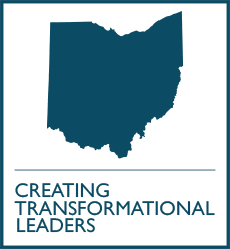Tips & Guidelines
Guidelines for Scholarship Day Poster Presentations
- Poster must fit on standard 40” x 60” foam core display board, which will be presented on an easel.
- The poster must have a title with authors and institution listed. The title should be centered in the top-middle part of the poster. Put the title text in a larger font than the text of the general pieces of the poster.
- Research studies will be evaluated on the basis of the following criteria:
- Introduction – Background and Significance
- literature review pertaining to the research question
- relevance to family medicine
- clearly stated hypotheses in a declarative form
- innovativeness of the research
- Methods
- description of the methods to include supporting evidence for the validity of the assessment/measurement scheme.
- appropriateness of the methods used to address the hypotheses
- Results
- description of the analyses
- description of the results
- are the results publishable and/or can be widely disseminated?
- Conclusion
- how the results inform the pertinent research literatures and the practice of family medicine
- limitations of the study
- Presentation
- clarity of the format
- visual appeal
- sense of mastery of the study
- poster presenter displayed passion/enthusiasm for project
- Introduction – Background and Significance
- Case studies will be evaluated on the basis of the following criteria:
- Introduction
- literature review pertaining to the case
- background of the case, including the disorder
- gap analysis
- relevance to family medicine
- Case
- relevant medical history of the patient (to include relevant positive and negative findings)
- description of the patient’s symptoms and signs
- description of the tests that were carried out
- description of any treatment or intervention
- description of the results of the treatment or intervention
- is the case publishable and/or can be widely disseminated
- Conclusion
- how the case informs the pertinent research literatures and the practice of family medicine
- how the case informs understanding of the disease etiology or treatment mechanism
- Presentation
- clarity of the format
- visual appeal
- sense of mastery of the study
- poster presenter displayed passion/enthusiasm for project
- Introduction
- Other projects (e.g., educational interventions, evidence-based reviews, etc.) will be evaluated on the basis of the following criteria:
- Introduction
- literature review pertaining to the topic
- relevance to family medicine
- clearly stated problem statement or need for project
- innovativeness of the project
- Methods
- description of the methods
- appropriateness of the methods used to address the problem statement
- Outcomes
- description of the project outcomes
- are the results publishable and/or can the project be widely disseminated?
- project has wide-reaching impact – impacts many patients or practitioners
- Conclusion
- how the project can inform the practice of family medicine
- limitations of the project
- Presentation
- clarity of the format
- visual appeal
- sense of mastery of the study
- poster presenter displayed passion/enthusiasm for project
- Introduction
- All criteria will be scored on a scale from 1 = “poor” to 5 = “excellent”.
- Improving readability
- Use a larger font than normal – 32 pt font works well for content. Title should be larger
- Use boldface type.
- Helpful hints
- The text on the poster does not have to explain everything about the project. Explain the most important information in a way to generate conversation, comments, and questions with those people reading the poster.
- Graphs, tables, and drawings often work well for the results of the project.
- Pictures and photographs may enhance the poster as long as they are large enough.
- See “Tips for Designing Scientific Posters” for more hints.
Contact
Joanne Fabick
Administrative Coordinator
Phone: 330.325.6770
Email: jef@neomed.edu
Department Chair
John Boltri, M.D.
Phone: 330.325.6787
Email: jboltri@neomed.edu

